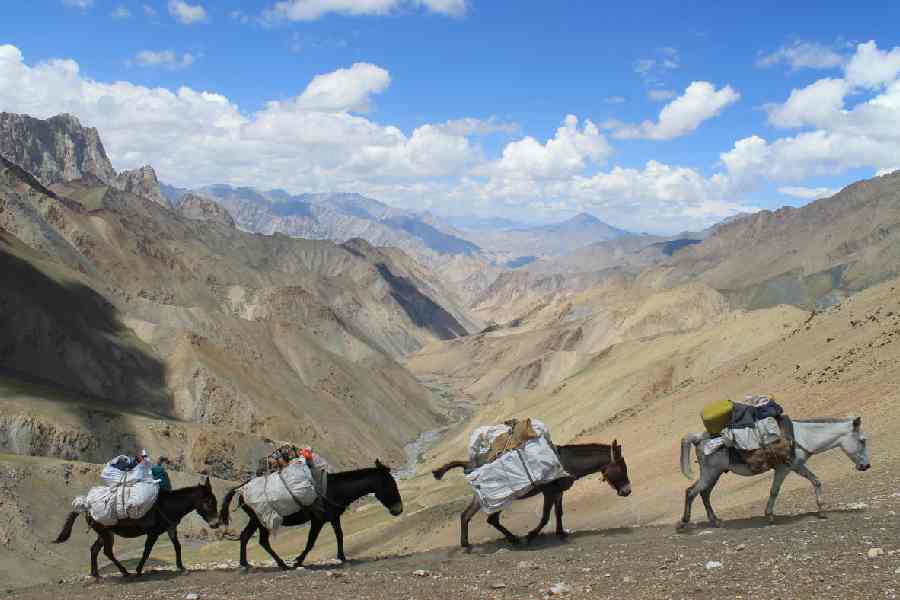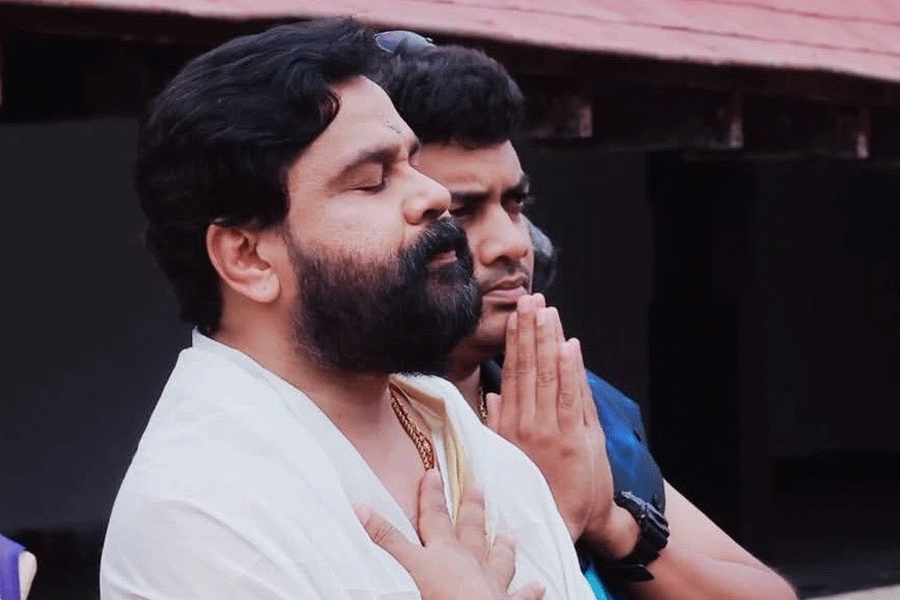When the record-bearing Chenab Railway Bridge —which links Jammu to the Kashmir Valley and which became operational in June this year — was conceptualised in 1983, nobody was quite sure how to access the construction site up in the densely forested hills around Reasi. Those days, there were no roads, motorable or otherwise, running through the region. And so, who should be pressed into service but mules.
It was the mules that carried humans and loads on their backs to kick-start the project. Later, it was with their assistance that the roads reaching up to the construction site were built.
Mules are the result of cross-breeding a male horse and a female donkey. They themselves are sterile, meaning they cannot reproduce. They are bred artificially by a department of the Indian Army, called the Remount and Veterinary Corps or RVC. And that is how it has been since the British came to rule these parts.
In the 1881 book titled On Two Fronts, Major H.M. Alexander writes about his experience in the “mule corps”, which he describes as a “unit peculiar to the Indian Army”. According to him, some of the animals were bred in India, but most were “recruited from the Argentine, China and the Punjab”.
“There are currently more than 5,000 mules with the Indian Army for carrying out tasks on difficult and unmotorable terrain,” says an army officer, who does not want to be named. He continues, “Mules and basically all animal transport are slowly being phased out by the Indian Army.” And so the number of mules to be bred varies every year. It depends on how many mules are required.
We know from news reports and accounts of military personnel that mules were on duty during the Kargil War. They ferried the injured and dying, and also carried supplies to posts at a height of nearly 6,000 metres above sea level.
The mule resembles the horse as well as the donkey — it has the latter’s stamina. But it is also quite distinctive. It is stronger than a horse, has a longer life span and a longer work life as well. It rarely suffers from health issues. It can withstand extremes of temperature and can survive on frugal rations, little water, and still display tremendous stamina and resilience.
The other standout feature of the redoubtable mule is its intelligence.
A mule called Pedongi was deployed in the 1971 war. And the story goes that it was unruffled and unperturbed by bullets, air strikes and trenches. It was even captured by the Pakistani Army along with other mules, but Pedongi escaped from captivity and returned to an Indian post. On its back were boxes of Pakistani ammunition. The Indian Army honoured Pedongi with a ceremonial blue velvet rug.
Pedongi even found a place in the Guinness Book of World Records for its intelligence and heroism.
The mules bred by the Indian Army undergo rigorous training. Isaac Chandy, who is an army veteran, says, “The RVC is responsible for breeding and training the raw mules to a set standard called ‘quite to handle’.”
That is, they are trained enough to follow orders, know the basics about carrying loads, to recognise roads and so on. These mules are also taught weight-carrying techniques. Formal training starts when a mule is nearly three years old. The entire training takes about 10-12 months, after which it is handed over to the army.
The Army Service Corps or ASC assigns the trained mules to different kinds of work. In India, the army depends on the mules referred to as Mountain Artillery for the survival of its personnel in high altitudes. During winter months, when the roads are covered with several inches of snow, the mules carry all the supplies, arms and ammunition, and construction and food material to these posts.
“The most important thing they do is carry artillery guns to places where there are no jeepable roads,” says Chandy. And though a mule can carry more than 100 kilograms on its back, the weapons are heavy, which is why they are divided into parts before they are loaded onto their animal carrier. If a mule hits a rock while carrying a heavy load, there is a good chance it will fall and slide down a deep gorge.
The army mule General Service carries cargo, fuel, food and water to places where motorable roads do not exist.
Mules have excellent memory. At night, they cannot see, but they can still navigate their way from memory. They are also said to be “extremely sure-footed”.
But their quiet efficiency often leads their handlers to forget that they are creatures of God. This gives rise to their ill treatment. Mules used for religious tourism such as the Amarnath Yatra and the Char Dham pilgrimage die of exertion. Some of them are made to work for 15 hours a day by the tour operators.
In 2022, during the Kedarnath Yatra, around 10,000 mules suffered injuries and 200 of them died. In 2023, another 115 animals died. The story was no different in 2024.
In many places in North Bengal and also the Northeast, the Election Commission has used mules to carry ballot boxes or EVMs, paper, ink and all other poll equipment to remote and high-altitude polling booths.
There are not enough medical centres to take care of these mules when they get hurt or fall sick due to exertion or dehydration. An Indian army officer, however, clarifies, “None of these is an army mule. There might be private breeders who use the animal for such services.” He continues, “Army mules are not sold even when they retire. There is a proper old age home where they spent the rest of their lives peacefully.”
More often than not, mules are said to be extremely stubborn and unwilling to perform a task. Veterinarians argue that mule handlers should be intelligent enough to identify the difference between what a mule is capable of doing and what a mule is willing to do.
If you push it hard, it will kick you back in defence. A source in the RVC says, “A mule will display bad temper towards a handler when it cannot trust him. It worries that the handler will hurt him. They are quick to react. Mules are superb kickers — they kick fast and accurately.”
He adds, “And when a mule misses a target, it is because it intended to do so.”










